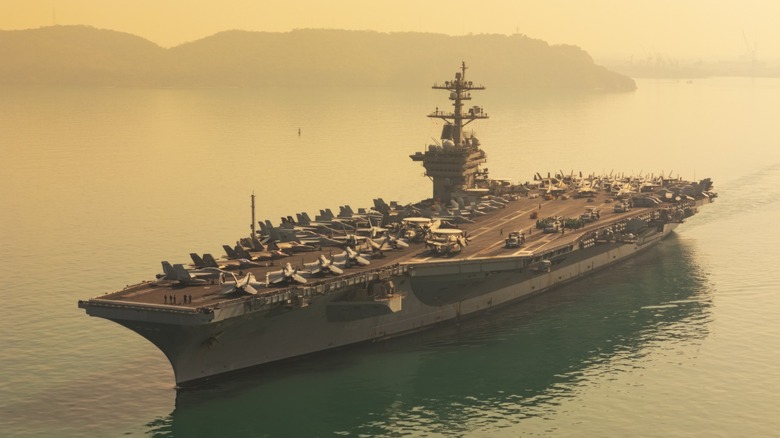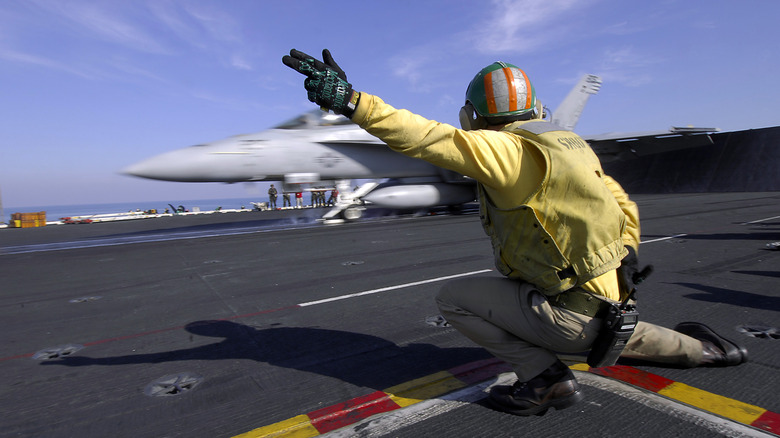Can Air Force Planes Land On Aircraft Carriers?
When you look at gigantic aircraft carriers, like the Gerald Ford-class or Nimitz-class supercarriers, it's hard to imagine that there are planes that can't take off or land from the long strips of runway on the deck. Yes, these runways are relatively long compared to other carriers, but they're definitely nowhere near airport-worthy, and not many planes are designed to take off and land from such a relatively small length of runway.
The Navy uses special jets with vertical and/or short takeoff and landing (V/STOL) capabilities on aircraft carriers. Take the F-35 (Lightning II) jet fighter series, for example. There are three types: F-35A, F-35B, and F-35C — similar planes but with very different takeoff capabilities. The F-35B was designed to literally take off like a helicopter, while the F-35C has a landing gear designed for catapult launches and cable arrestments, but the F-35A is a conventional takeoff and landing (CTOL) Air Force jet, and can't handle the demands of STOL.
The same applies to the F-16 Fighting Falcon, which the USAF aims to replace with the F-35A. it's not built with tail hooks and landing gears powerful enough to stop the plane on such a short runway. Even the superior supersonic stealth jet, the F-22 Raptor, doesn't have the robust landing gear nor light weight to let it land on an aircraft carrier, which is one of the reasons the Navy doesn't fly the F-22 Raptor.
How are jets able to take off and land from aircraft carriers?
The jets that operate from aircraft carriers are specially built to handle the extreme conditions of taking off and landing on a floating runway that's only a few hundred feet long. Compared to conventional runways, you'd be more accurate to see them as short launch pads. Therefore, getting a 30,000 to 40,000-pound aircraft into the air (or safely stopped) takes more than just a skilled pilot. This is where the Catapult-Assisted Take-Off But Arrested Recovery (CATOBAR) system comes in.
Planes are launched from the carrier using a catapult to get them to flight speed in mere seconds and land by catching an arresting wire with a hook mounted beneath the tail. It's a dramatic, high-stress process: just imagine going from zero to 150+ mph in 2-3 seconds, or slamming down at full throttle to snag a cable before running out of deck space. When the Navy fields a new aircraft, it has to be designed with these concepts in mind.
Older carriers like those in the Nimitz class use steam catapults, but newer Gerald R. Ford-class carriers have upgraded to EMALS (Electromagnetic Aircraft Launch System). EMALS replaces steam with magnets, providing smoother acceleration, less aircraft wear, and the ability to launch lighter drones and heavier strike jets more efficiently. The arresting gear has also been modernized to AAG (Advanced Arresting Gear) for finer control when decelerating.

